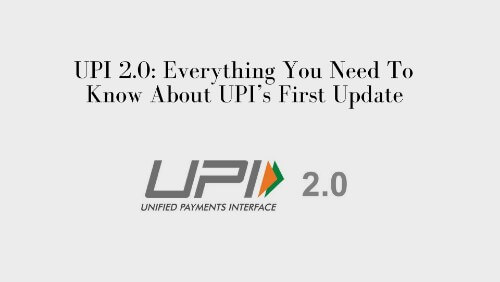Reserve Bank of India (RBI) in association with 10 Indian banks launched the Unified Payment Interface (UPI) on April 11, 2016. The UPI app is expected to compete with mobile wallets such as Paytm and Mobikwik in the peer-to-peer transactions space.
Using the UPI app, subscribers will be able to transfer any amount (below INR 1 Lakh) to other UPI users. This will eliminate the need to authorize them as a beneficiary. They only need to know the unique UPI ID of the recipient. Large-scale Indian banks such as ICICI Bank, Axis Bank, Punjab National Bank, and HDFC Bank are participating in the UPI system.
The interesting point to note is that like Paytm, SBI Anywhere, and a few other Western mobile wallet systems, UPI will also be using QR Codes as an option to complete the transaction. To make a payment, you will need to scan the QR Code on the UPI app of the recipient.
UPI app will significantly cut down the time taken to complete a transaction. This system is expected to be a big blow on mobile wallet systems such as Paytm, Mobikwik, and Oxigen as well as mobile wallets operated by banks such as Pockets by ICICI.
As soon as the app is launched, we will update this post with directions on how to use it.
That’s all you need to know about how India’s Unified Payment interface (UPI) will use QR Codes for payments. What are your views on QR Code based UPI payments? Share them in the comments below.
